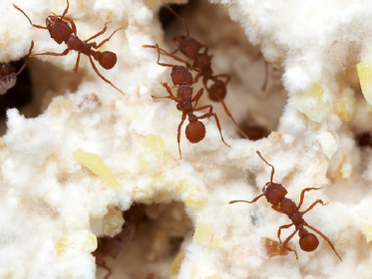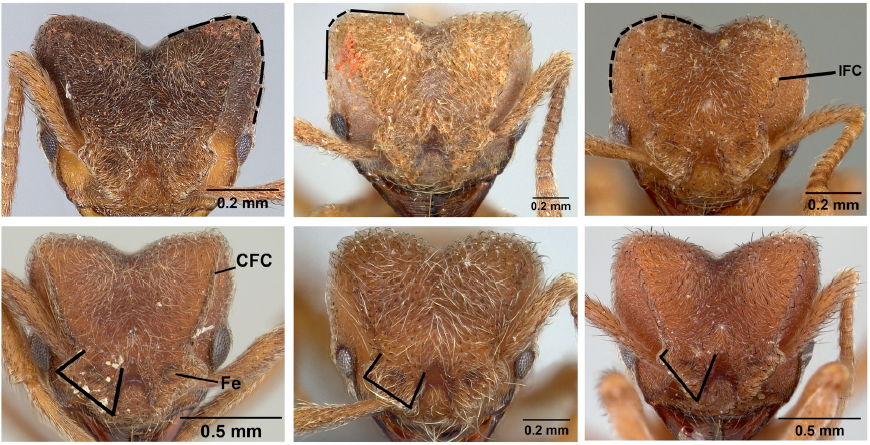|
Ants have been farming for millions of years before humans walked the planet. Learn more about the Sericomyrmex ants that Dr. Ješovnik studies. About 12,000 years ago, during the First Agricultural Revolution, humans went from being hunters and gatherers to farmers and settlers. This led to a surplus of food. Excess food freed up people to do things other than obtaining food which led to specialization and jump-started civilization. Because of our technology and civilization, we humans like to think we’re special. However, we’re about 50 million years late to the farming game. Amazingly, ants began farming fungi before humans were even a species. Inspired by the world-famous myrmecologist E.O. Wilson, Dr. Ana Ješovnik studies the Sericomyrmex ants to better characterize and understand their biology.
Dr. Ješovnik also constructed a species level phylogeny of the different Sericomyrmex species. Relying on ultra conserved elements (UCEs), areas of DNA that are highly conserved among species, along with close examination of the morphology of different Sericomyrmex species, she reconstructed a well-supported phylogeny, or family tree, of Sericomyrmex ants and created a key for identification of these ants. For the creation of her key, she relied on various head measurements, eye characteristics, and larval morphology resulting in 3 new species for a total of 11. So how does Ana’s work matter in a broader context? This is a useful model system to satisfy curiosity about the co-evolution of symbiosis and mutualisms in nature. These ants could also be useful for those interested in public health. These ants harbor bacteria that are crucial for maintaining healthy fungi in their farms. We can potentially use the novel antibiotics these bacteria produce to address super bugs and the antibiotic resistance crisis.
About the Author Jonathan Wang is a 3rd year PhD student studying insect immunity with Professor Raymond St. Leger. Comments are closed.
|
Categories
All
Archives
June 2024
|
Department of Entomology
University of Maryland
4112 Plant Sciences Building
College Park, MD 20742-4454
USA
Telephone: 301.405.3911
Fax: 301.314.9290
University of Maryland
4112 Plant Sciences Building
College Park, MD 20742-4454
USA
Telephone: 301.405.3911
Fax: 301.314.9290



 RSS Feed
RSS Feed




